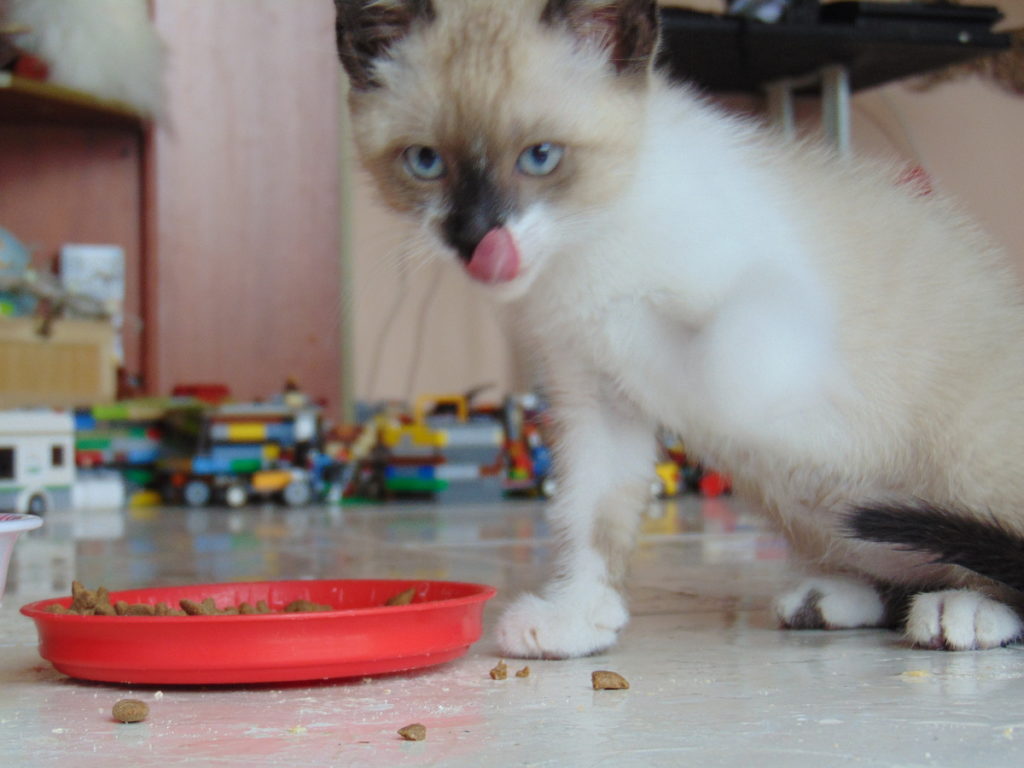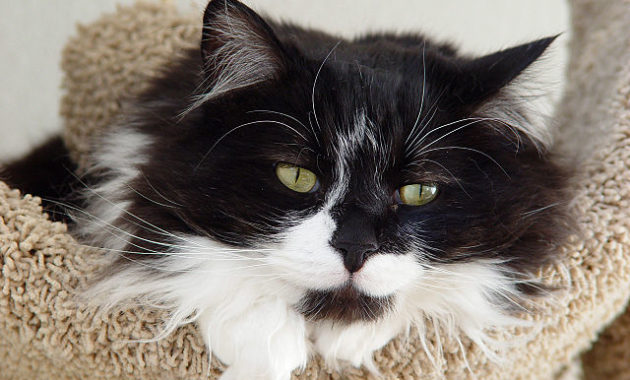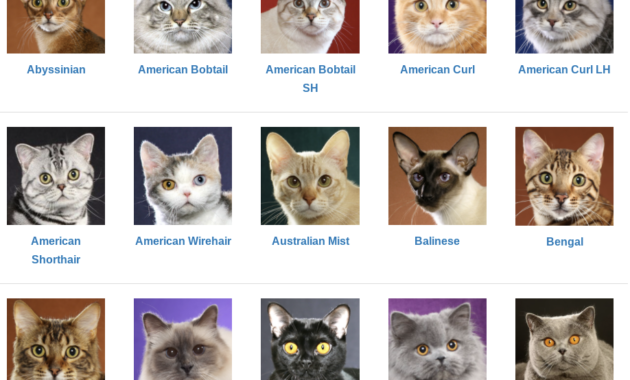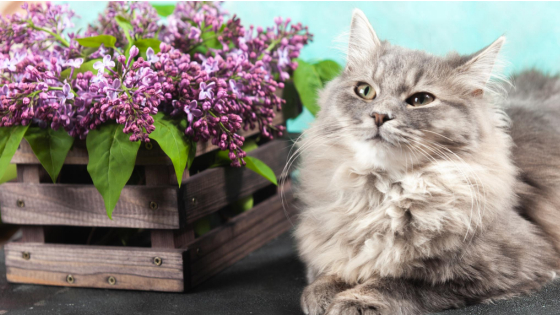
Cats are amazing creatures.
They have a unique way of engaging with their environment and exhibit fascinating behaviours that can often surprise us.
Understanding the behaviour of cats, especially those with a high prey drive, is essential for any cat owner or feline behaviour specialist.
A cat’s prey drive is an instinctive tendency to hunt and capture small animals, which can significantly influence their behaviour and relationship with their environment.
In this article, I will discuss the various aspects of feline prey drive, how it affects cats, and how it can be managed by owners who want to create an enriching environment for their cats.
Living with cats who have a high prey drive can be both rewarding and challenging.
However, understanding how they respond to environmental stimuli can help owners adjust to such behaviours and create a more balanced environment for their furry family members.
With some dedication and patience, you can provide your cat with an enriching environment that satisfies its instincts while keeping them safe from potential harm.
What Is Feline Prey Drive?
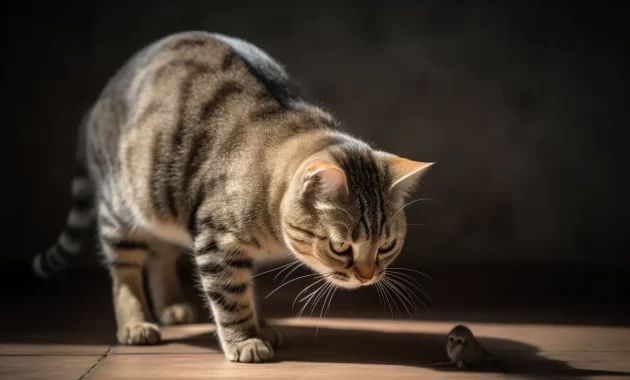
Feline prey drive is an instinctive behaviour that all cats have but can manifest differently depending on the individual.
It’s something every cat owner should be aware of and understand, as it affects how a cat interacts with its environment.
Cats with a high prey drive are blessed with powerful instincts and an eagerness to hunt for food.
A cat’s predatory behaviour is innate and instinctual and can often be observed from a young age.
Watching a kitten pounce on a toy mouse or batting at a piece of string can give us clues about how strong their prey drive might be.
When cats reach adulthood, those same instincts can appear during playtime or when they spot potential prey outdoors, like birds or small animals.
High prey-drive cats may require more interactive toys like laser pointers or puzzle feeders to keep their hunting skills sharp indoors.
With these tools, owners can provide their cats with healthy outlets for their instincts without harming other animals.
Doing so helps ensure cats stay happy and healthy while protecting wildlife in the local area.
SEE ALSO
Cats That Are Infrequently Vocal
Cats That Gain Weight Easily
How Does Prey Drive Affect Cats?
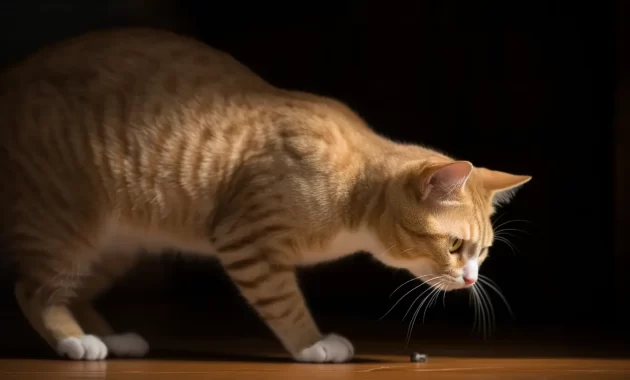
Cats with a high prey drive are often more active and energetic, requiring frequent stimulation to keep them happy.
As such, their owners must provide alternative outlets for their natural energy, mainly if they live in an environment with limited space or access to the outdoors.
Prey playtime effectively provides these cats with the physical and mental exercise they need while also allowing them to express their instincts.
During this time, owners can use toys that mimic the movements of small animals, encouraging their cats to engage in instinctive behaviours like stalking and pouncing.
The key to success during prey playtime is ensuring the cat feels safe and secure while playing.
This means creating a comfortable environment where they feel no pressure or threat from other animals or humans.
Additionally, it’s important for owners not to push their cats too far beyond what comes naturally.
Allowing them ample opportunity to explore and hunt will help them remain engaged and satisfied with every play session.
For these cats to truly thrive in their environment, it’s essential for owners must understand how best to cater for their needs; providing alternative outlets for their energy and regular prey playtime helps these cats stay healthy and content within the home.
Managing High Prey Drive-In Cats
Ah, cats with a high prey drive!
As a feline behaviour specialist, I’ve spent countless hours figuring out why they behave the way they do.
The truth is, understanding the behaviour of cats with a high prey drive can be pretty complicated.
To help make things easier to comprehend, I’ve compiled this handy table so you can better understand what goes into managing them:
| Factor | Action | Reward Based Training |
|---|---|---|
| Stimuli | Identify triggers | Positive reinforcement for good behaviours |
| Environment | Provide outlets for stimulation & exercise | Use treats as rewards for desirable behaviours |
| Diet & Nutrition | Adjust diet for optimal health & weight management | Use treats as rewards for desirable behaviors |
By understanding these factors and applying reward-based training techniques, you can ensure that your cat’s high prey drive doesn’t get out of hand.
Of course, it takes patience and consistency to achieve the desired results – but when done correctly, it can lead to a much more enjoyable experience for you and your furry friend.
Creating An Enriching Environment
Cats with high prey drive require an enriching environment to stay healthy and content.
Positive reinforcement and engaging activities are paramount for these felines.
As a feline behaviour specialist, I recommend starting with interactive toys to help satisfy their urge to hunt.
Placing toys around the house, like fishing pole-style toys, can help encourage cats to engage without having access to live prey.
Plenty of play opportunities are also essential for cats with a high prey drive.
This can be achieved through puzzle feeders or treat-dispensing toys that challenge them physically and mentally while providing positive reinforcement when they succeed.
Interactive wand toys are also great for stimulating their hunting instinct and providing exercise for the cat.
The key is creating an environment that allows cats with a high prey drive to express their natural behaviours in a safe and controlled way.
We can ensure these cats remain happy and healthy family members through positive reinforcement, interactive toys, and playful activities.
Ensuring Safety For Cats With High Prey Drive
Caring for a cat with a high prey drive can be overwhelming, but it doesn’t have to be!
With the proper knowledge and tools, you can ensure the safety of your furry friend and keep them in their happiest state.
Sufficient exercise is critical in managing a cat with a high prey drive.
This includes interactive playtime and providing stimulating toys and enrichment activities to keep them mentally stimulated.
In addition to physical activity, avoiding triggers that could spark predatory behaviour is essential for success.
This may include limiting access to windows or other areas where they could see potential targets such as birds or squirrels.
Ultimately, cats with high prey drive can still live happy lives if owners know how to best care for them.
With patience and understanding of their needs, you can help your kitty lead a safe and content life while satisfying their natural instinctive drives!
Frequently Asked Questions
How Can I Determine If My Cat Has A High Prey Drive?
Determining if your feline friend has a high prey drive is essential for any cat owner.
To identify your cat’s prey drive level, you can observe their behaviour and use enrichment activities.
For example, when playing with your cat, watch how they react to items resembling their natural prey, such as feather or wand toys.
This could indicate a high game drive if they are eager to pounce and quickly capture the thing.
Furthermore, offering various feeding methods like puzzle feeders or timed feeders could also be used to assess their preying instincts.
This is because cats with a high prey drive may be more willing to solve puzzles or actively hunt for food to satisfy their instinctual needs.
What Are Some Signs That My Cat Has A High Prey Drive?
Socializing cats and providing environmental enrichment are essential to determine if your cat has a high prey drive.
You can look for signs of increased salivation, dilated pupils, staring intently at a moving object, or playing with imaginary prey.
If your cat exhibits any of these behaviours, it could indicate a high prey drive.
It’s important to remember that every cat is different, and this behaviour should be discussed with a feline behaviour specialist to ensure your kitty is enjoying their environment as much as possible!
What Can I Do To Distract My Cat From Hunting?
Did you know that cats who live entirely indoors tend to have a higher prey drive than those who get to go outside?
Consider purchasing stimulating toys or building an outdoor enclosure to distract your cat from hunting.
This way, your cat can explore their natural hunting behaviours in a safe environment.
If you’re looking for ways to stimulate your feline friend, try introducing new toys to your cat every few days.
Toys that move and make noise especially appeal to cats with a high prey drive.
This is fun for them and allows them to practice their instincts in a safe environment.
Are There Any Breeds Of Cats More Likely To Have A High Prey Drive?
When it comes to cats that have a high prey drive, certain breeds are more likely to exhibit this behaviour than others.
Breeds such as the Siamese and Bengal may be predisposed to hunting indoors, so providing plenty of playtime and interactive toys for these cats to satisfy their natural hunting instincts is essential.
If your cat seems mainly focused on hunting, or if you have a breed known for having a high prey drive, ensure you provide ample opportunities for them to engage in indoor hunting.
This could include games like hide and seek or activities with stimulating toys that will encourage your cat’s instincts.
Are There Any Safety Risks Associated With A High Prey Drive?
Cats with a high prey drive can pose safety risks to the cat and those around it.
For instance, if the cat is not provided with appropriate exercise options and outlets for their natural behaviours, it may become stressed and act out in undesirable ways.
To reduce the risks of a high prey drive, feline behaviour specialists suggest providing your cat with plenty of hunting opportunities.
This can include interactive toys that mimic hunting behaviours, such as chase toys or even specially designed treat-dispensing puzzles.
Additionally, providing your cat with enrichment activities like scratching posts or perches can help reduce stress levels and provide an outlet for their natural behaviours.
Conclusion
Cats with a high prey drive can be an excellent addition to any home.
With the proper guidance and understanding, they can provide an immense amount of joy and companionship.
It’s important to remember that all cats are different, so it’s best to contact a feline behaviour specialist for advice on effectively managing your cat’s hunting habits.
With patience and dedication, you’ll be able to ensure that your cat is safe while still enjoying its instincts.

